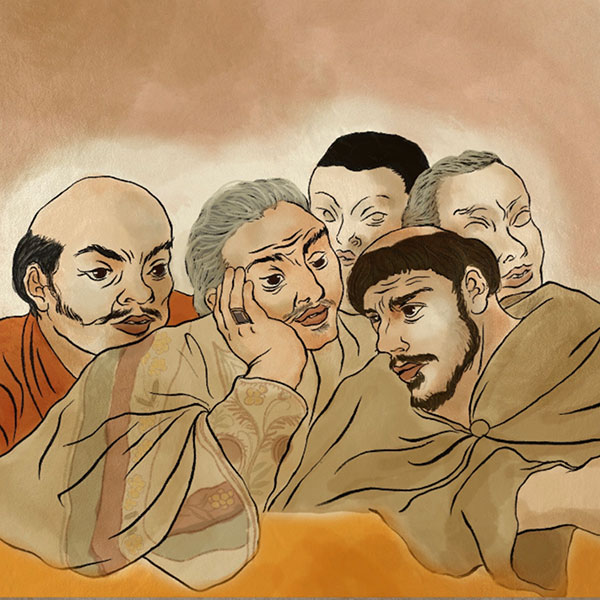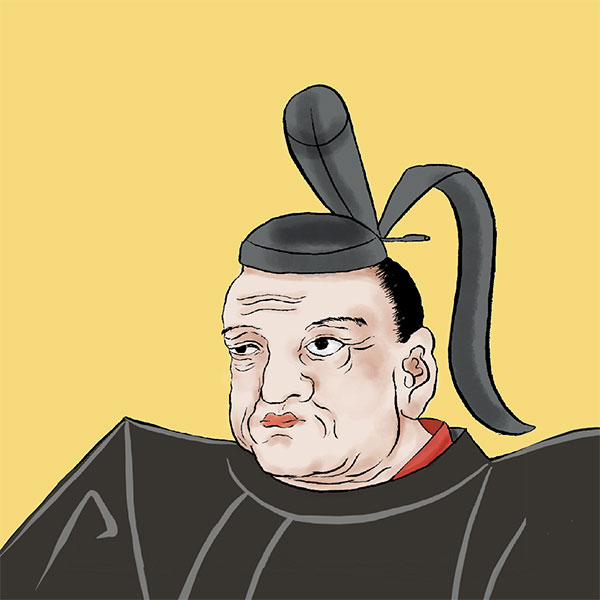Keicho Mission to Europe (1/2)Date Masamune's diplomatic corps, Spain and Rome

Keicho Mission to Europe
- Article category
- case file
- Incident name
- Keicho Mission to Europe (1613)
- place
- Miyagi Prefecture
- Related castles, temples and shrines

Sendai Castle
- people involved
The Edo period has a strong image of being isolated from the rest of the world, and that diplomatic relations with foreign countries went through the Tokugawa shogunate. However, in 1613 (Keicho 18; this time we are mainly overseas, so the Western and Japanese calendars are reversed), the first lord of the Sendai domain, Masamune Date, dispatched a diplomatic mission overseas as a ban on Christianity was issued. . Moreover, it is officially approved by Ieyasu Tokugawa! That is the Keicho Mission to Europe. What exactly was the purpose of the mission, which included Munenaga Hasekura and other Japanese people? What is Masamune's "true" aim? There are various theories about the Keicho Mission to Europe, and we will provide an easy-to-understand explanation of its purpose, participating members, and what happened after they returned home.
What is the Keicho Mission to Europe? Introducing the members
The Keicho Mission to Europe was a diplomatic mission sent on October 28, 1613 (September 15, 18) by Masamune Date, the lord of the Sendai domain, to the kings of Mexico and Spain (present-day Spain), and the Pope. The main envoy of the envoy was Franciscan missionary Luis Sotelo, and the deputy envoy was Tsunenaga Hasekura, a vassal of the Date family. For about seven years, the mission visited Mexico, Spain, and Rome, and returned to Japan via the Philippines. However, when he returned to Japan, a storm of ban on Christianity was raging, and as will be explained later, Sotelo was unable to return to Japan.
In addition to Sotelo and Tsunenaga, a total of 180 people boarded the ship, including retainers of the Sendai clan, Christians (including Japanese), Southern barbarians including the Spanish ambassador Sebastian Vizcaino, merchants, navigators, sailors, and shipwrights. However, most of them stayed in Mexico, and it seems that only about 30 people actually visited Europe.
By the way, there is a confusing mission called the Tensho Embassy sent to Rome in 1582 (10th year of Tensho) by the Christian feudal lord Otomo Sorin, but this mission was not for diplomatic purposes but for the purpose of "proselytizing Christianity in Japan." The main purpose was to obtain support from the Pope. Those involved were the Jesuits, a mendicant order that rivaled Sotelo's Franciscans. The two sides are fighting over missionary work in Japan.
Sotelo, the official envoy and leading figure of the Keicho Mission to Europe, was born in 1574 (Tensho 2) into a prestigious family in Seville, Spain. He came to Japan in 1603 (Keicho 8) and began missionary activities. Sotelo, who was extremely fluent in Japanese and worked as an interpreter, was criticized by other religious orders for having the skills of a politician despite being a priest, and for having a strong desire to improve his own status in Japan. He was an ambitious person. The company was criticized in a letter from the time for inflating stories and misleading other companies. Personally, I think he was a person who was highly praised and criticized, but what is the truth?
Tsunenaga Hasekura, on the other hand, was a vassal of the Date clan born in 1571 (Motoki 2). He earned 600 koku of chigyo tori and served as the head of the Ashigaru group. It seems that Masamune had his eye on him, and Tsunenaga's father, Tsunenari Yamaguchi, was ordered to commit seppuku, and even though Tsunenaga was expelled for his involvement, he was appointed as the deputy envoy of the mission.
Why did Masamune plan the Keicho Mission to Europe?
Date Masamune, who planned the Keicho Mission to Europe, had a strong interest in Nanban culture, and although he was not a Christian, he interacted with missionaries and Christians such as Sotero, and learned about Christian teachings and culture. .
Another person who influenced Masamune was Sebastian Vizcaino, the Spanish ambassador who came to Japan in 1611 (Keicho 16). Two years ago, when a Spanish ship bound for Mexico washed ashore in Japan, Japanese people came to Japan as ambassadors in return for helping the crew and the shogunate transporting the crew to Acapulco. In addition, the former Philippine governor Rodrigo de Vivero, who was on board the Spanish ship, had been discussing trade between Japan and Spain with Ieyasu Tokugawa, and Vizcaino returned with the answer.
Ieyasu would like to acquire the new smelting technology ``Mercury Amalgam Process,'' which was used in a mine in Mexico, which is part of Spain's Viceroyalty of Nueva España. They requested the dispatch of engineers, but Spain's stance was that ``commerce and missionary work are the same thing.'' Ieyasu found it difficult to accept Christian missionary work, so negotiations with Vizcaino did not go well. One year later, in 1612, Ieyasu tried to send the San Sebastian with Vizcaino on board to Mexico for trade negotiations, but the ship was wrecked off the coast of Uraga.
Ieyasu was approached by the United Kingdom and the Netherlands, who took the stance that ``trade is trade, separate from the propagation of Christianity,'' and Ieyasu had other partners to negotiate with for trade. Perhaps they thought it wasn't worth the trouble, but the sinking of this ship brought an end to diplomatic negotiations with Spain.
Masamune offered to trade with Mexico and Spain
Sebastian Vizcaino's negotiations with Tokugawa Ieyasu did not go well, but in contrast to Ieyasu, Date Masamune welcomed Vizcaino favorably. When he met Vizcaino, who had gone north for surveying, Masamune said, ``I would like to guarantee the treatment of ships from the Philippines and Mexico, and to have exchanges with Mexico and eventually Spain.''
Why was Masamune so active in interacting with Mexico and Spain in the first place? This has a lot to do with the location of the Sendai domain. At that time, Spain used the ``Western Route'' from the Atlantic Ocean to the Americas to the Pacific Ocean, sailing between Europe and Asia from Manila, the Philippines. The ports on the Sanriku coast within the Sendai domain fit perfectly into this westward route. In other words, the Sendai domain was a place that could function as a gateway to Nanban. Interaction and trade between the two countries can generate enormous wealth. Masamune would like to make this a reality.
According to historical documents from the time, it seems that he was planning to build a ship bound for Spain in the fall of 1611 (Keicho 16), and there is a record of him having a meeting with Sotelo. Later, in the wake of the shipwreck of the San Sebastian, Masamune negotiated with Ieyasu and was authorized by the Shogunate to take on the mission to Europe project.
Masamune made a contract with Vizcaino, who was unable to return to Mexico, and in exchange for building ships and providing navigational technology, Masamune promised to pay for the shipbuilding costs, pay the sailors, and provide food. . Thus began the construction project of the San Juan Bautista, which made full use of Spanish technology. The shogunate's shipbuilding magistrate and shipwrights joined in, and it took about 45 days for the ship to be built by 800 carpenters, 700 blacksmiths, and 3,000 miscellaneous workers.
What was the “true” purpose of the Keicho Mission to Europe?
The main purpose of the Keicho Mission to Europe was diplomatic negotiations aimed at establishing trade between the Sendai Domain and Mexico and Spain. This can be inferred from the letters Date Masamune sent to King Philip III of Spain, whom he visited, and Pope Paul V.
However, this letter is a scam. At that time, the shogunate took the initiative to ban Christianity, and in 1612 (Keicho 17), it issued an order banning Christianity. As a result, Luis Sotelo was captured and ordered to be executed. If it weren't for Masamune's plea for life and the letter saying, ``I'm sending you as an envoy, please send it here,'' my life might have been in danger.
Under such circumstances, the letter describes Christianity, praising Christianity and saying, ``I want to spread Christianity to my vassals and people,'' and ``I cannot convert due to unavoidable circumstances, but if it is possible, I would like to convert.'' It contains content that conflicts with the Shogunate's ban on Christianity.
Furthermore, at the end there is a sentence that says, ``Please make your decision based on what Sotelo and Tsunenaga Hasekura have spoken to.'' I wonder if there was some confidential information that would not be good if it was documented and confirmed by the shogunate. I doubt it.
Based on these contents, some researchers claim that there was a plan by Masamune to overthrow the Edo shogunate. The plan was to form a military alliance with Spain and overthrow the Tokugawa shogunate. This is an old theory, but in recent years, the Pope's responses to the envoys, which are held in the Vatican Secret Archives, have been added as a new historical document. According to the response, Masamune requested that Masamune be crowned a Catholic king and that he would like to establish a Catholic knighthood.
However, there are counterarguments that there are no documents regarding military alliance between Japan and Spain, and that Sotelo, who acted as an interpreter, may have gone out of control, and the debate continues.
Other theories include the ``Nanban conquest theory'' based on Chinese poems composed by Masamune, and the theory proposed after the Great East Japan Earthquake, which was implemented for the purpose of recovery from the ``Keicho Tsunami'' that occurred in December 1611 (Keicho 16). There are several theories about the true purpose, including the ``earthquake recovery theory.'' It's quite interesting, so if you're interested, please check it out.
Follow the route of the Keicho Mission to Europe!
The San Juan Bautista was completed successfully, and the Keicho Mission to Europe left Tsukiura (Ishinomaki City, Miyagi Prefecture) on October 28, 1613, fully prepared. It took about three months to cross the Pacific Ocean, arriving at the Mexican port city of Acapulco on the following day, January 29, 1914 (some say the 25th or 28th). After the advance team entered Mexico City, the main team arrived there on March 24th. Many Japanese people have been baptized as Christians here, but it has been decided that negotiations will take place in earnest in Spain, rather than with the Viceroy.
The article on the Keicho Mission to Europe continues.
- people involved

- WriterNaoko Kurimoto(Writer)I am a former travel industry magazine reporter. I have loved history, both Japanese and world history, since I was a child. I usually enjoy visiting temples and shrines, especially shrines, and often do ``pilgrimages to sacred places'' themed around historical figures. My favorite military commander is Ishida Mitsunari, my favorite castle is Kumamoto Castle, and my favorite castle ruins is Hagi Castle. My heart flutters when I see the ruins of battle castles and the stone walls of castle ruins.




